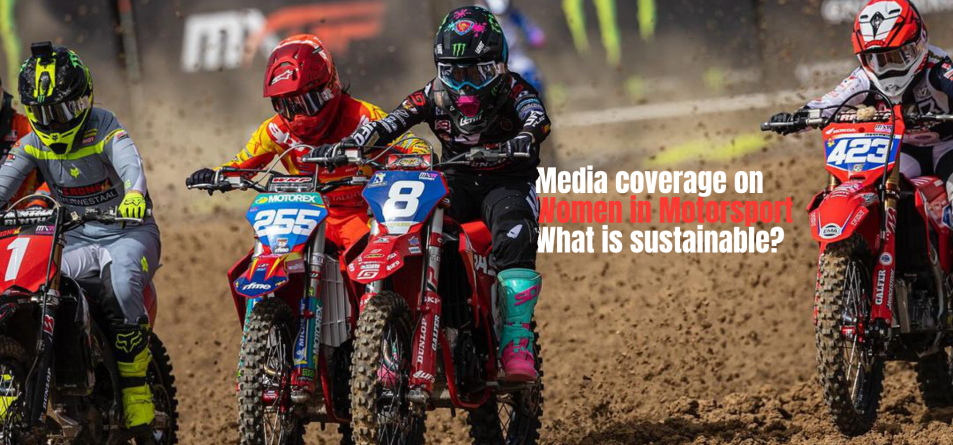Media coverage of Women in Motorsport – What is Sustainable? The question begs examination as producing Media content on Women in Motorsport requires huge investment of time, resources, knowledge, experience, and intel on how to broaden reach of women racing at World Championship level to global mainstream audience.

Starting with the main principle of thought on production of Media content which increases viewer engagement on women racing varying FIA and FIM Motorsport disciplines through written articles, interviews, feature stories, along with films and shorts for website and social media platforms.
The strategy has played out for MXLink over the course of 10 years, with statistics from founding year in 2014 attracting under 1000 views, to peaking at 1.7 million views in 2023. Key factors on increasing readership has been continual assessment on providing creative content which informs, enlightens, and provokes thought on how women have taken on board each and every challenge to pursue their respective racing careers.
Equally, data analysis on Media produced prompts awareness on what content exceeds demand, where content has fallen short of meeting public demand, and how to anticipate next steps on achieving growth in market audience. The push to attract new viewers remains key to broadening reach of audience, which requires strategic planning on which disciplines and women to cover pre-during and post racing.

In the first 3 months of 2024, MXLink attracted 4,077 New Viewers in January, 2,661 in February, and 4,766 in March to current date. In 2023, total New viewers were 45,674, 2022: 34,725, 2021: 34,126, and 2020: 11,347. The increase of readership and following has been achieved through practical planning on production of content which is sustainable, and growth orientated.
For example: the realities of covering Women track-side, at venues and locations in vastly different geographical regions around the world not only requires exorbitant costs, including travel time which erodes productivity of work, but also narrows opportunities to cover multiple disciplines which occur at the same time.
Already, major shifts on increasing sustainability of Media production has occurred from remote based studios offering fans and follower’s alike all-encompassing experiences of watching what is happening on track.

As stated by Sky Sport F1 in Britain: ”Sky F1 will use state-of-the-art studio for this weekend’s Australian Grand Prix coverage – the first time the whole team will not be on-site at a race. The new studio, equipped with augmented reality graphics and a 360-degree filming environment, at Sky Studios in Osterley, will be used for the next three races in Australia, Japan, and China”. Ref: Sky Sports.
Such evolvement on how Media content is produced reaffirms the actions undertaken by MXLink on covering Women in Motorsport from remote base in New Zealand. The hard graft involved establishing transparent communications with rider’s, driver’s, organizers, promoters, Team Principals, and Media personal to augment creation of content on respective Motorsport career pathways for women – past, present, and for the future.
From covering women competing in The Dakar Rally, to driver’s racing WSeries and F1 Academy, to raising profiles of women in Extreme E, WMX, GNCC WXC, Enduro/Hard Enduro Series, along with women competitors in ISDE, Trial GP, Moto 3/MotoE, and Indy Next, a total of 1100 articles have been produced, circulated, and shared amongst global audience to date.

The facts are clear, sustainability of Media production relies on achieving growth of market audience within the scale and scope of cost effectiveness, which requires a change in perspective within the industry and Media conglomerates as well.
Header photo: WMX Round 1 at MXGP of Spain Image: Juan Pablo Acevedo
Words: Sharon Cox.





Comments are closed.